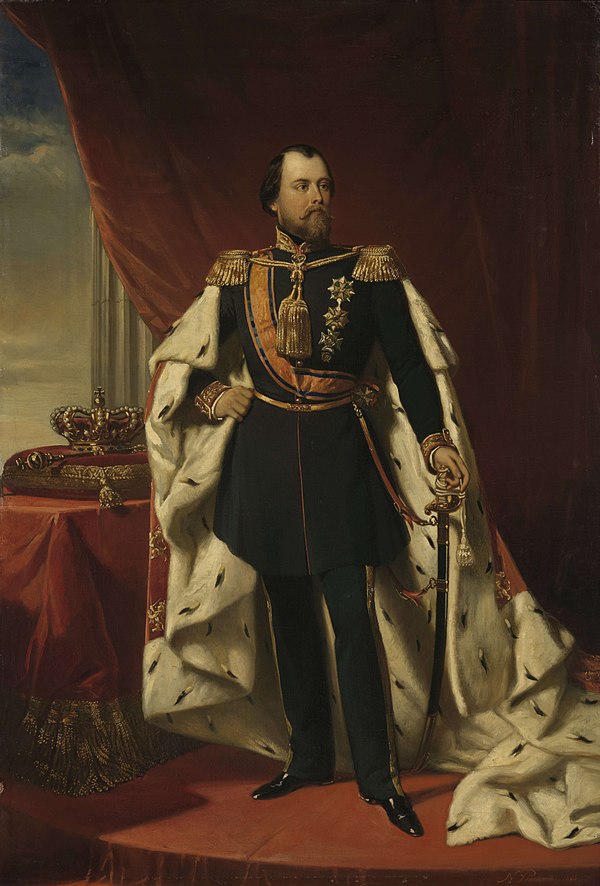20241223
From today's featured article
The Bonn–Oberkassel dog was a Late Paleolithic (c. 12,000 BCE) dog whose partial skeletal remains were found buried alongside two humans in Bonn, Germany. Initially identified as a wolf upon its discovery in 1914, its remains were separated and lost within the University of Bonn's collections. These were reunited in the late 1970s, and the animal was re-identified as an early domestic dog and dated to the Late Glacial Interstadial. It likely suffered and survived canine distemper as a puppy, a disease with an almost 100-percent fatality rate in wild dogs and wolves. The puppy's survival likely required intensive care from humans, including food, water, and regular cleaning. This may show a close emotional bond between the humans and the dog, and possibly that it was regarded as a pet – perhaps by the humans it was buried alongside. The dog died aged around 7.5 months for unclear reasons; it may have died from natural causes, or have been sacrificed to be buried alongside the humans. (Full article...)
Did you know ...
- ... that the 2022 Andover tornado (video featured) injured only three people, despite damaging more than 1,000 buildings?
- ... that Dithapelo Keorapetse was named Speaker of the National Assembly of Botswana shortly after losing his bid for election to the legislature?
- ... that the 1962 space-age pop album Latin-esque was recorded with halves of the orchestra separated by almost a city block to heighten its stereo effects?
- ... that Bob Gandey founded a circus that continues to be operated by his descendants more than a century later?
- ... that Hudson's Bay Company ships reserved special rooms for important Lower Chehalis visitors due to their key role in regional trade networks?
- ... that referee Mike Hasenfratz acted in an ice hockey fight in Stay Tuned?
- ... that Planting a Rainbow has been praised for both its "deft use of colors" and the educational identification of seeds, bulbs, sprouts, and blossoms?
- ... that David Bookbinder was Margaret Thatcher's "least favourite local government leader"?
- ... that entitativity refers to how "groupy" a group is?
In the news
- A car attack (aftermath pictured) at a Christmas market in Magdeburg, Germany, kills five people and injures more than two hundred others.
- In France, Dominique Pelicot and 49 other men are convicted of the serial rape of his then-wife Gisèle Pelicot.
- A 7.3-magnitude earthquake hits Vanuatu's capital, Port Vila, leaving at least sixteen people dead.
- Cyclone Chido leaves more than 140 people dead in southeast Africa.
On this day
December 23: Night of the Radishes in Oaxaca City, Mexico; Festivus
- 1776 – American Revolutionary War: American troops, overwhelmed by British reinforcements, retreated from the Battle of Iron Works Hill.
- 1888 – During a bout of mental illness, Dutch painter Vincent van Gogh (pictured) severed part of his left ear and gave it to a woman in a brothel in Arles, France.
- 1916 – First World War: Allied forces gained a strategic victory at the Battle of Magdhaba on the Sinai Peninsula.
- 1957 – Leading the Australia national cricket team, Ian Craig became the youngest-ever Test cricket captain at the time.
- 2008 – The Guinean military engineered a coup d'état, announcing that it planned to rule the country for two years prior to a new presidential election.
- Carl Gustaf Wrangel (b. 1613)
- Dost Mohammad Khan (b. 1792)
- Carla Bruni (b. 1967)
- Chryssa (d. 2013)
From today's featured list

Since 2005, nineteen Christmas or New Year's special episodes have aired on the British science-fiction television series Doctor Who. During its original run, from 1963 to 1989, episodes were occasionally broadcast over holiday periods, but rarely made mention of the holidays. When Doctor Who was revived in 2005, special Christmas episodes were produced yearly until 2017. From 2019 to 2022, the series transitioned to New Year's Day specials instead, returning to Christmas specials in 2023. The holiday episodes have proved to be a success with viewers, bringing in larger viewing figures than regular episodes. Doctor Who revolves around an alien known as the Doctor, who travels with a companion in a time and space machine called the TARDIS (pictured). A twentieth special, "Joy to the World", is set to be released on 25 December 2024. (Full list...)
Today's featured picture

George Norman Barnard (December 23, 1819 – February 4, 1902) was an American photographer who was one of the first to use daguerreotype, the first commercially available form of photography, in the United States. A fire in 1853 destroyed the grain elevators in Oswego, New York, an event Barnard photographed. Historians consider these some of the first "news" photographs. Barnard also photographed Abraham Lincoln's 1861 inauguration. Barnard is best known for American Civil War era photos. He was the official army photographer for the Military Division of the Mississippi commanded by Union general William T. Sherman; his 1866 book, Photographic Views of Sherman's Campaign, showed the devastation of the war. This photograph, by Mathew Brady, shows Barnard c. 1865.
Photograph credit: Mathew Brady; restored by Adam Cuerden



































































































































